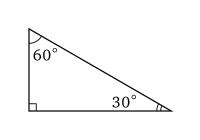Eternity puzzle
The Eternity Puzzle is a placement game for one person made up of 209 non-image, monochrome pieces that are to be placed next to one another to form an approximately regular dodecagon . It was developed by the Englishman Christopher Monckton and since June 1999 distributed worldwide by the British company Racing Champions Ltd. The high prize money of one million pounds , which was announced for the first submission of a correct solution, caused a sensation . The puzzle sold over 225,000 times in the first two years. In the UK , it was the top-selling game of all time in the first month.
description
The game consists of a square game board with a twelve-sided recess, which has a diameter of approx. 60 cm. The 209 parts are flat, irregular, polygonal plastic plates, all of which have the same metallic-green color. In particular, the front and back cannot be distinguished. Their dimensions are between two and four centimeters.
Schematically, all parts consist of halved, equally sized, equilateral triangles , of which about 12 pieces each form a puzzle piece. All parts are different from each other and none has a rotational or mirror symmetry .
solution
With the help of several computers, the two found Cambridge - mathematician Alex Selby (born 1968) and Oliver Riordan (born 1972) on 15 May 2000, a solution, a year after the game's release. Her victory was announced according to the rules on September 30th of that year. Far more solutions are now known, the total number is estimated to be at least 10 80 . Selby and Riordan found that the difficulty increases up to around 70 to 80 pieces, but from this number of pieces the difficulty does not increase any further, as the increasing number of possible solutions compensates for this from this point on. Or to put it another way: you can fill up the puzzle with up to 70 to 80 pieces without any major difficulties and then it only starts to get really complicated.
The solution strategies use evaluation functions to assess positions and individual stones (similar to a chess computer ) in order to minimize the number of positions to be examined, since the total number of all positions would exceed all capacities. The aim is to achieve interim solutions that are as benign as possible (benign hole shapes) or to use problematic parts as early as possible.
Incorrect information in the literature
The following information in the literature can easily be falsified :
- The dodecagon is regular.
- It can only be approximately regular. The dodecagon is best made by a circumference with a diameter of 26.901. Edge lengths of the equilateral triangle approximated. In principle, it is not possible to construct a regular dodecagon for such a puzzle because
- except for the fourth and sixth value are in irrational relationships to one another. The ratios can be approximated by 7: 19: 26: 4: 7: 8.
- The puzzle pieces are (all) 12 triangles in size.
- The puzzle consists of 2500 triangles. Since 2500/209 = 11.96 ..., some puzzle pieces contain fewer than 12 triangles.
Eternity II
The successor Eternity II has not yet been solved, the prize money this time was 2 million dollars and was limited in time. This game consists of 256 squares of the same size , each with a pattern printed on each edge. The solution is a 16 × 16 square with the patterns matching on adjacent squares. Although the puzzle - like its predecessor - is NP-complete , i.e. has a comparable level of difficulty, there are (based on the higher number of pieces) far fewer possible solutions.
Individual evidence
- ^ Ingo Althöfer: One million British pounds for two mathematicians . In: Spectrum of Science - SPECIAL: Omega . No. 4/2003 . Spectrum, Heidelberg 2003, p. 8 .
- ↑ compare with a schematic representation of a solution
- ^ After Clifford Pickover, Math Book, Sterling Publ. 2012, p. 496, at least 10 95
- ↑ Teddy Talks: The Eternity Puzzle - Professor Oliver Riordan
- ↑ Dietmar Wolz: How long does eternity last? In: Spectrum of Science - SPECIAL: Omega . No. 4/2003 . Spectrum, Heidelberg 2003, p. 9 .







